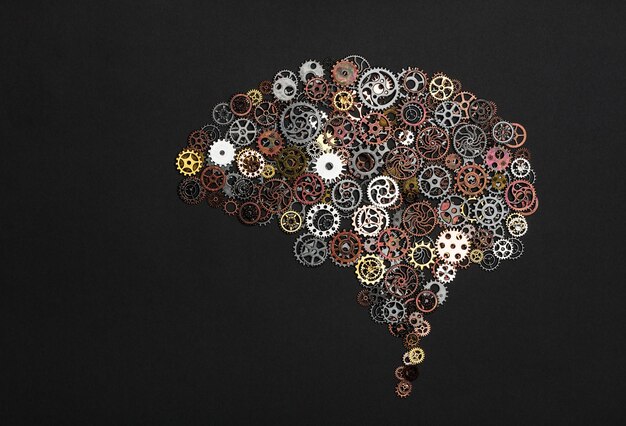Social Media’s Role in Political Polarization: Critical Consumption Strategies

Navigating the complex digital landscape requires understanding The Role of Social Media in Shaping Political Polarization: Strategies for Critical Consumption to mitigate its divisive impact and foster healthier civic discourse in a highly interconnected world.
In an increasingly interconnected world, understanding The Role of Social Media in Shaping Political Polarization: Strategies for Critical Consumption has become paramount. These platforms, designed to connect us, often inadvertently drive us apart, creating echo chambers and reinforcing existing biases. This article delves into how social media molds political discourse and offers actionable strategies for consumers to navigate this complex landscape critically.
The Digital Divide: How Social Media Amplifies Political Polarization
Social media platforms have undeniably transformed the way we consume news and engage with political discourse. While democratizing information, they also introduce mechanisms that can exacerbate existing societal divisions. Understanding these underlying processes is the first step towards more critical consumption.
Algorithmic Echo Chambers and Filter Bubbles
One of the most significant contributions of social media to political polarization stems from its core design: personalized algorithms. These complex systems learn our preferences, interests, and past interactions, then curate content tailored specifically for us. The intention is to enhance user experience, but the consequence is often a self-reinforcing cycle of information that confirms pre-existing beliefs. This creates “echo chambers” where dissenting opinions are rarely encountered, and “filter bubbles” where the world view presented to an individual becomes increasingly narrow.
- Content reinforcement: Algorithms prioritize content aligning with past engagement, limiting exposure to diverse perspectives.
- Homophily in connections: Users tend to connect with like-minded individuals, amplifying the echo chamber effect.
- Diminished critical thinking: Constant affirmation of views can reduce the imperative to question or seek alternative information.
This systematic filtering means users may genuinely believe their perspective is universally shared, leading to disillusionment and antagonism when confronted with differing viewpoints in the real world.
The Speed and Spread of Misinformation
The viral nature of social media, designed for rapid dissemination, becomes a double-edged sword when it comes to political narratives. Misinformation and disinformation, whether intentional or not, can spread like wildfire, often outpacing factual corrections. Sensational and emotionally charged content, regardless of its veracity, tends to garner more engagement, making it highly effective in shaping opinions and inflaming divisions.
The speed at which unverified claims circulate can overwhelm traditional fact-checking mechanisms, leading to a public sphere where truth is increasingly contested. This environment is ripe for political manipulation, where false narratives can be strategically deployed to sway public opinion or discredit opponents.
Ultimately, the amplified reach and personalized delivery of information, combined with the rapid spread of often unverified content, create a fertile ground for political polarization. Users become entrenched in their views, seeing alternative perspectives not just as different, but as inherently wrong or even dangerous.
Understanding the Psychological Underpinnings of Digital Divide
The impact of social media on political polarization isn’t solely a technical problem; it’s deeply rooted in human psychology. Our inherent cognitive biases and social needs are exploited and amplified by the architecture of these platforms, leading to increasingly fractured communities.
Confirmation Bias and Group Identity
Humans are naturally inclined to favor information that confirms their existing beliefs—a phenomenon known as confirmation bias. Social media algorithms, by feeding users more of what they already agree with, actively reinforce this bias. When our feeds are filled only with voices that echo our own, our convictions deepen, and our capacity for empathy towards differing viewpoints diminishes.
Moreover, platforms foster strong group identities. Political affiliations can become tribal, where belonging to a certain online community means adhering to its shared ideology and demonizing “the other side.” This tribalism simplifies complex issues into us vs. them narratives, making compromise and constructive dialogue exceedingly difficult. We seek validation from our in-group, which only reinforces our biases.

Emotional Contagion and Outrage Cycles
Social media is a hotbed for emotional contagion. Content designed to evoke strong emotions—especially anger, fear, and outrage—tends to get the most engagement, leading to its rapid spread. Platforms often reward virality, inadvertently incentivizing the creation and sharing of inflammatory content. This fuels “outrage cycles,” where each piece of content aims to provoke a stronger emotional response than the last, escalating tensions and demonizing opponents.
This constant exposure to emotionally charged, often negative, content can lead to a distorted perception of reality, where political opponents are seen as not just different, but as threats. This environment makes it challenging to engage in rational debate and promotes reactive, rather than thoughtful, communication. The psychological drive for belonging and the biological imperative to react to threats intertwine on social media, feeding the polarization cycle.
Analyzing these psychological factors is crucial for understanding why social media has become such a powerful engine for political fragmentation. It’s not just about what information we see, but how that information triggers our deepest cognitive and emotional responses.
Identifying Markers of Polarized Content
Navigating the politically charged landscape of social media requires a sharp eye for content that intentionally or unintentionally contributes to polarization. Learning to identify these markers is a vital step toward critical consumption and fostering a more balanced perspective.
Exaggeration, Hyperbole, and Loaded Language
A common tactic in polarized content is the liberal use of exaggeration and hyperbole. Information is often presented in extreme terms, with little room for nuance or complexity. Subtle differences are amplified, and opposing viewpoints are painted in absolute black and white. “Always” and “never” are common linguistic cues, along with emotionally charged adjectives intended to incite strong reactions rather than facilitate rational thought.
- Extreme descriptors: Words like “catastrophic,” “crisis,” “radical,” or “treasonous” used broadly.
- Simplification of complex issues: Reducing multifaceted problems to easily digestible, often misleading, soundbites.
- Attacks rather than arguments: Focusing on discrediting individuals or groups rather than debating policies or ideas.
This often includes “loaded language” – words or phrases designed to evoke strong positive or negative emotional responses beyond their literal meaning. Such language bypasses critical thought, appealing directly to biases and emotions.
Absence of Nuance and Demonization of Opponents
Nuance is often the first casualty in polarized discourse. Complex issues are presented as binary choices, fostering an “either/or” mentality. There is little acknowledgment of legitimate alternative viewpoints, nor is there an exploration of the complexities inherent in public policy or social issues. Instead, content tends to categorize individuals and groups into monolithic “us” versus “them” categories.
The demonization of political opponents is a hallmark of highly polarized content. Instead of disagreeing with policies, the content attacks the character, intelligence, or morality of those holding differing views. This can involve attributing malicious intent, questioning patriotism, or portraying dissenters as inherently evil or dangerous. When opponents are dehumanized, it becomes easier to justify extreme rhetoric and dismiss their concerns entirely.
Learning to recognize these markers allows individuals to step back, evaluate the true intent of the content, and resist the urge to react emotionally. It empowers users to seek out more balanced sources and engage with information more thoughtfully.
Strategies for Critical Social Media Consumption
To combat the polarizing effects of social media, users must adopt proactive strategies for critical consumption. This involves a conscious effort to diversify information sources, verify facts, and engage with content more thoughtfully.
Diversify Your Information Diet
Breaking free from echo chambers requires intentionally seeking out diverse perspectives. This means moving beyond your comfort zone and engaging with news sources, commentators, and social media accounts that represent a wide spectrum of viewpoints, even those you disagree with. It’s not about changing your beliefs, but understanding the narratives and arguments prevalent in different communities.
Consider following journalists and academics from various ideological backgrounds. Make an effort to read articles from publications known for different editorial stances. Actively seeking out dissenting opinions, even if challenging, broadens understanding and helps contextualize the information encountered on your primary feeds. This proactive approach helps to expose the nuances often lost in algorithmically curated content.
Fact-Checking and Source Verification
In an age of rampant misinformation, fact-checking should become a second nature. Before sharing content, especially emotionally charged political content, take a moment to verify its claims. This involves consulting reputable, independent fact-checking organizations like Snopes, PolitiFact, or FactCheck.org.
Furthermore, always verify the source of information. Does the account or website have a reputation for accuracy and journalistic integrity? Is it biased? Look beyond sensational headlines and investigate the original context of images or quotes. Cross-referencing information with multiple reliable sources can quickly expose fabricated or misleading content. If something feels too good (or too bad) to be true, it likely is.

Engage Thoughtfully, Avoid Reactive Sharing
The impulsive nature of social media often encourages reactive sharing without much thought. To counter polarization, cultivate a habit of thoughtful engagement. Before commenting or sharing, pause and consider whether the content truly contributes to constructive dialogue or merely fuels division. Ask yourself if the post is designed to inform, or to provoke.
Avoid engaging in pointless online arguments that are unlikely to lead to any productive outcome. If you do engage, strive for respectful dialogue, even with those who hold vastly different views. Focus on facts and reasoned arguments rather than ad hominem attacks. Sometimes, the most critical consumption involves choosing not to engage with content designed purely for outrage. Practicing this restraint contributes to a healthier digital environment for everyone.
By implementing these strategies, individuals can transform from passive recipients of information into active, critical consumers, capable of discerning truth from falsehood and fostering more respectful online interactions.
Cultivating Empathy and Media Literacy in the Digital Age
Beyond individual consumption habits, fostering empathy and improving media literacy are crucial systemic responses to combat social media’s role in political polarization. These broader strategies empower individuals and communities to navigate the digital landscape more effectively and humanely.
The Importance of Empathy in Online Interactions
One of the most corrosive effects of online polarization is the erosion of empathy. When individuals are reduced to labels or caricatures in an “us vs. them” narrative, it becomes easy to dismiss their humanity, their fears, and their legitimate concerns. Actively cultivating empathy means making a conscious effort to understand the perspectives, experiences, and motivations of those with whom we disagree. This does not imply agreement, but rather a recognition of shared humanity.
In online interactions, this translates to pausing before reacting emotionally, considering the potential real-world impact of our words, and seeking common ground where possible. It means recognizing that behind every online avatar is a real person with their own complex life. Empathy can be fostered by engaging with diverse narratives, listening more than speaking, and remembering that people’s political views are often shaped by a myriad of personal and societal factors, not just malice.
Developing Robust Media Literacy Programs
Media literacy, the ability to access, analyze, evaluate, and create media in a variety of forms, is an essential skill in the digital age. Comprehensive media literacy programs, from early education through adulthood, can equip individuals with the tools to critically assess information from all sources, especially social media. These programs should teach about algorithmic biases, the psychology of persuasion, the identification of misinformation, and the importance of diverse sourcing.
Such education should extend beyond simply identifying “fake news” to understanding how narratives are constructed, how emotionally manipulative content impacts decision-making, and how to participate constructively in online discourse. Empowering citizens with these skills is a long-term investment in a more informed and resilient democracy. It’s about teaching people how to think, not what to think, when engaging with digital content.
By prioritizing both empathy and media literacy, societies can build a stronger defense against the divisive forces of social media, encouraging more thoughtful public discourse and fostering a greater sense of shared understanding.
The Future of Social Platforms and Policy Implications
Addressing the polarizing effects of social media requires not only individual responsibility but also systemic changes within the platforms themselves and through thoughtful policy interventions. The future of a healthy digital public sphere depends on these evolving considerations.
Platform Responsibility and Design Changes
Social media companies bear a significant responsibility for the polarizing environment they have inadvertently fostered. Their current business models, largely driven by engagement metrics, often reward sensational and divisive content. Moving forward, platforms could implement design changes that prioritize user well-being and civic discourse over raw engagement.
- Algorithm recalibration: Shifting algorithms to promote diverse viewpoints and credible information rather than just viral content.
- Transparency in moderation: Clearer guidelines and appeal processes for content moderation decisions.
- Human-centric design: Exploring features that encourage slower, more thoughtful engagement rather than impulsive reactions.
Some platforms are already experimenting with features like “pause to consider” prompts before sharing news articles or downranking content deemed less trustworthy. These steps, while nascent, indicate a growing recognition of their role in shaping public discourse.
Regulatory Frameworks and Public Discourse
Governments and regulatory bodies are increasingly grappling with how to address the societal impact of social media without stifling free speech or innovation. Potential policy implications range from transparency requirements for political advertising to regulations around data harvesting and algorithmic accountability. The challenge lies in crafting legislation that is effective, adaptable, and respectful of fundamental rights.
Discussions around content moderation, platform liability, and user data privacy are ongoing and complex. The aim is to create regulatory frameworks that encourage platforms to act as responsible stewards of public discourse, rather than passive enablers of division. This often involves balancing the need for open communication with the imperative to protect individuals and democratic processes from manipulation and harm.
Ultimately, a multi-pronged approach involving platform innovation and thoughtful regulation will be essential to mitigating social media’s polarizing effects and fostering a more constructive and inclusive digital public sphere. This ongoing dialogue will shape the future of information sharing.
Navigating the Digital Landscape: A Global Imperative
The challenges posed by social media’s influence on political polarization are not unique to any single nation; they represent a global imperative. As digital connectivity expands, so too does the need for collective action and shared understanding to maintain healthy public discourse.
The Interconnectedness of Global Polarization
Political polarization, fueled by social media, is a phenomenon that transcends national borders. Misinformation campaigns originating in one country can quickly reverberate across continents, influencing elections and societal stability elsewhere. The digital amplification of extremist views can inspire real-world violence in distant lands, demonstrating the profound interconnectedness of our online and offline worlds.
This global nature means that effective strategies for critical consumption and platform regulation cannot operate in isolation. International cooperation, shared research, and cross-cultural media literacy initiatives become vital. Understanding how different political systems and cultural norms interact with social media dynamics is crucial for developing truly effective countermeasures against global digital fragmentation.
Building Resilient Digital Citizenship
The ultimate goal is to cultivate a resilient form of digital citizenship – where individuals are not only skilled navigators of online information but also active and responsible participants in the global digital community. This involves fostering a sense of shared responsibility for the health of the online environment, recognizing that our individual actions contribute to the collective good or ill.
Resilient digital citizenship entails being informed, discerning, empathetic, and constructive in online interactions. It means understanding the power of our clicks and shares, and choosing to wield that power responsibly. It is about recognizing that social media, while a powerful tool for connection, also presents significant challenges to the fabric of democratic societies worldwide. Empowering individuals to be critical and active participants is key to ensuring that digital platforms serve humanity, rather than divide it.
Addressing the role of social media in shaping political polarization is an ongoing journey that requires continuous adaptation, learning, and collaboration across all levels of society, from individual users to international policymakers.
| Key Aspect | Brief Description |
|---|---|
| 🧠 Algorithmic Influence | Personalized algorithms create echo chambers, reinforcing existing beliefs and limiting diverse exposure. |
| 🚨 Misinformation Spread | Social media’s viral nature accelerates unverified claims, hindering factual correction and fueling division. |
| 🔍 Critical Consumption | Strategies include diversifying information sources, fact-checking, and thoughtful online engagement. |
| 🤝 Empathy & Literacy | Cultivating empathy and promoting media literacy are essential for healthier digital interactions and civic discourse. |
Frequently Asked Questions About Social Media and Polarization
Social media algorithms are designed to show users content they are most likely to engage with, based on their past interactions. This creates “filter bubbles” and “echo chambers” where individuals are primarily exposed to information that confirms their existing beliefs, limiting their exposure to diverse viewpoints and thus reinforcing political polarization.
Confirmation bias is the human tendency to seek out, interpret, and recall information in a way that confirms one’s pre-existing beliefs. On social media, this bias is exacerbated as algorithms feed users content that aligns with their views, making it harder to consider alternative perspectives and contribute to one-sided political narratives.
Effective strategies include diversifying your information diet by following various news sources, actively fact-checking claims using reputable sites, and engaging thoughtfully rather than reactively. This means pausing before sharing, verifying sources, and aiming for constructive dialogue instead of immediate emotional responses.
Media literacy equips individuals with the skills to critically analyze, evaluate, and understand the construction of media messages. By learning about algorithmic influence, identifying misinformation, and recognizing manipulative language, individuals can better navigate complex digital information,
reducing their susceptibility to polarizing narratives and fostering more informed opinions.
Platforms can mitigate polarization by redesigning algorithms to prioritize credible and diverse content over just engagement. They can also enhance transparency in content moderation, implement features that encourage thoughtful interaction, and dedicate resources to combatting misinformation. Their proactive efforts are crucial for fostering healthier online civic spaces and reducing societal division.
Conclusion
The intricate mesh of social media has undeniably reshaped political discourse, often magnifying divisions and fostering polarization through algorithmic echo chambers and the rapid spread of misinformation. While challenging, individuals are not powerless. By understanding the psychological underpinnings of these effects and adopting robust strategies for critical consumption—such as diversifying information sources, rigorous fact-checking, and thoughtful engagement—we can mitigate social media’s most divisive impacts. Ultimately, cultivating empathy and promoting widespread media literacy are essential steps towards building a more discerning, resilient, and unified digital citizenry, capable of navigating the global information landscape with greater wisdom and responsibility.





